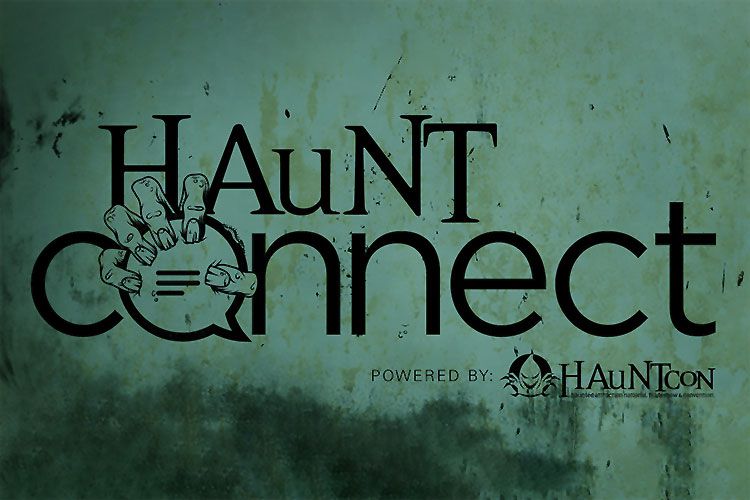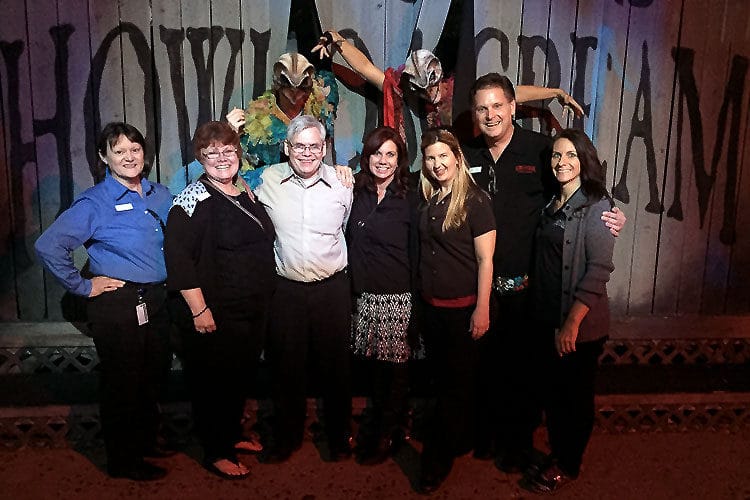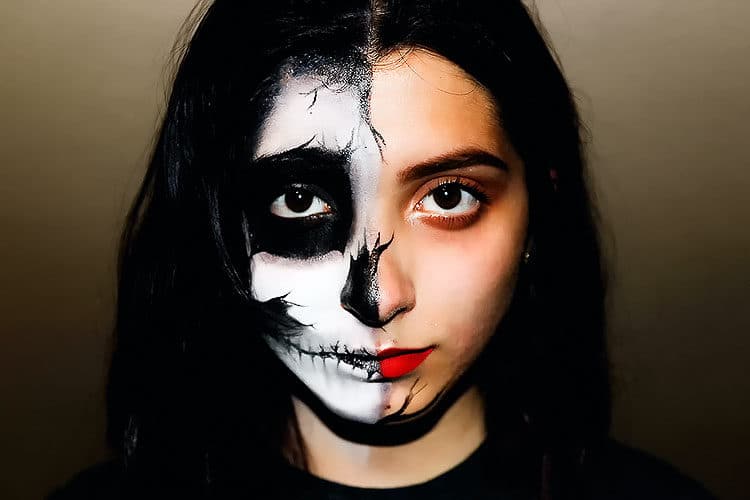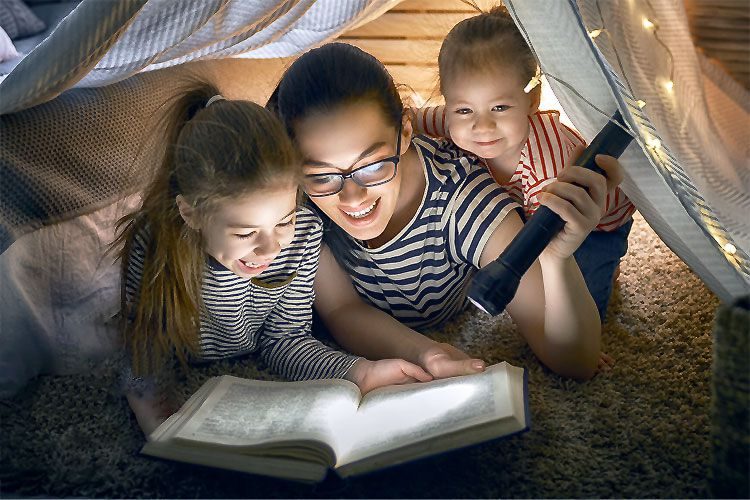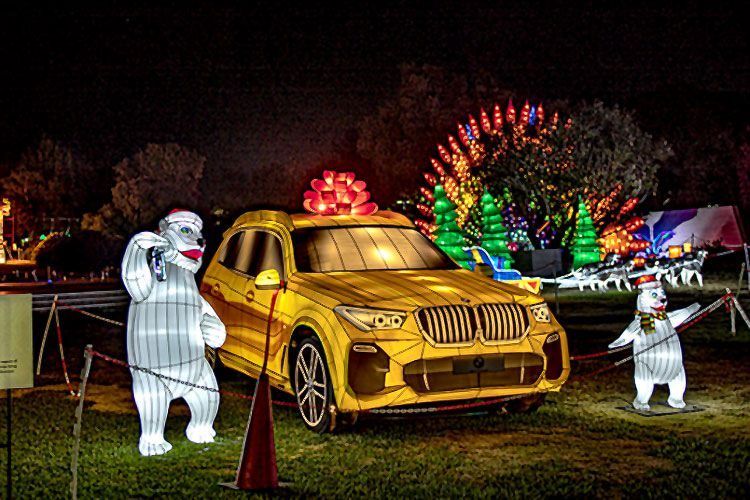Music and sound enhance any experience, but story must guide your score.
By Chris Thomas
Have you ever been to an experience or event where each scene is just one unrelated set of things after another? Maybe it’s a haunt in which there’s one spooky jump scare after another jump scare or maybe prop after prop after prop. You realize there’s no connective material between these elements, and you leave the event feeling it made no real impression on you. Maybe the haunted attraction was scary and maybe the jump scares were great, but it was lacking one crucial fundamental—a good story.
We’ll talk in this article about how music can enhance your story:
- How to create not just a good experience but a good story.
- Why music creates an experience that guests remember.
- How to craft music to build on the scene or experience.
- How music can enhance tone, atmosphere, characterization, pacing and flow.
- When to have music in your experience and when not to.
- Incorporating cinematic timing in music.
Watch The Session
There’s a Difference Between a Good Experience and a Good Story
You may have noticed that some stories leave a powerful and long-lasting impression, and certain experiences in the themed entertainment industry do the same. I’m sure you’re still talking about certain events or attractions you attended years ago—which is great, because you’re continuing to advertise somebody’s brand. You’ve probably also noticed that how something as simple as a superb campfire tale can be so engaging that it leaves a lasting impression—maybe even more so than an elaborate, high-tech event. That’s because it has one essential thing going for it—a great story.
Humans are programmed to absorb and connect with stories. We fundamentally learn, communicate, and form memories better when ideas are presented in story form. And stories sometimes leave more than a lasting impression—they can leave a permanent scar, if they’re truly effective.
Adding special effects, props, or even a good musical score to a story can just be a gimmick. They’re only useful if they’re supporting the trajectory of the scene or the story the guest is experiencing. This is the difference between a good story and a good experience. You have to have the fundamentals of a good story to effectively elaborate on it with good gimmicks.
How to Find Your “Goya”
There’s a word in the Urdu language—“Goya”—that refers to the suspension of disbelief that happens when a fantasy is so realistic that it temporarily becomes reality. I’m sure you’ve all had this experience when you’re watching a compelling movie or live event performance. You forget for a minute or several hours that you’re not living that experience. Your heart can race, and you can feel completely transported.
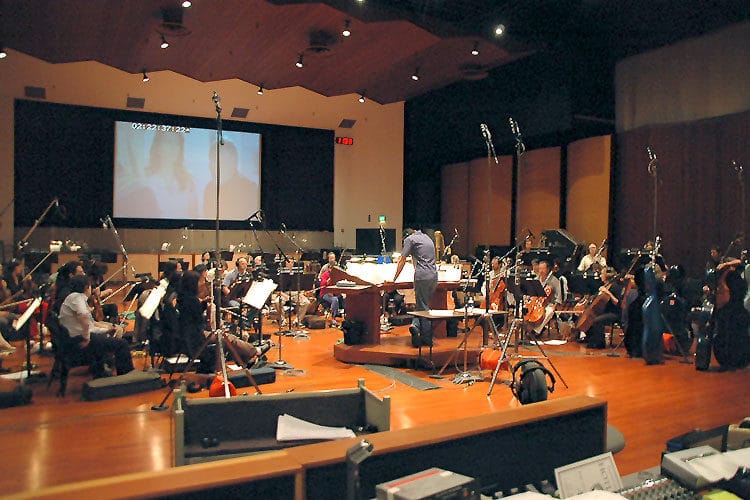
Integrating Music to Create a Memorable Experience
When we talk about using music to enhance a story, the key word is integration—does the music enhance the story? Music is an element that matters greatly, because it has the power to completely elevate a show—and the power to completely ruin one. Music can transform your attraction or completely distract from it. Even though people sometimes can’t be specific about why something works for them musically, I find that audiences can tell when a score adds value to a show or not.
Some clients say to me, “We really don’t care what the music for the Christmas show or the live show sounds like, just write something poppy and happy.” The thing is, an audience notices the quality. So, if you hire someone who produces quality music, that’s good for your business and can truly elevate and create a far more cinematic experience in your show.
What I’m talking about isn’t revolutionary or complex. We all fundamentally know this, but, in my experience, music is often thought about only at the last minute or neglected altogether. Often, the discussion about music or even whether to have music happens really late in the development of an experience. It often seems the music and sound are crammed into the process without much direction or intentionality and, as a result, it feels like they’ve been forced into the experience. There’s no connection between the development of story threads and how the score serves them. Each design trajectory in the show took its own course rather than thinking of them of as a unit working together.
What happens when music is an afterthought is something like this: I get pulled into a show, everyone’s really excited to have a new big score recorded for it, and I ask them to tell me about the story and the characters. Often, I get answers like, “It’s a happy scene, so we want the music to sound happy,” or, “it’s a spooky scene, so we need spooky music.” That’s not telling me the story, so I don’t have a basis for creating powerful music to enhance that story.
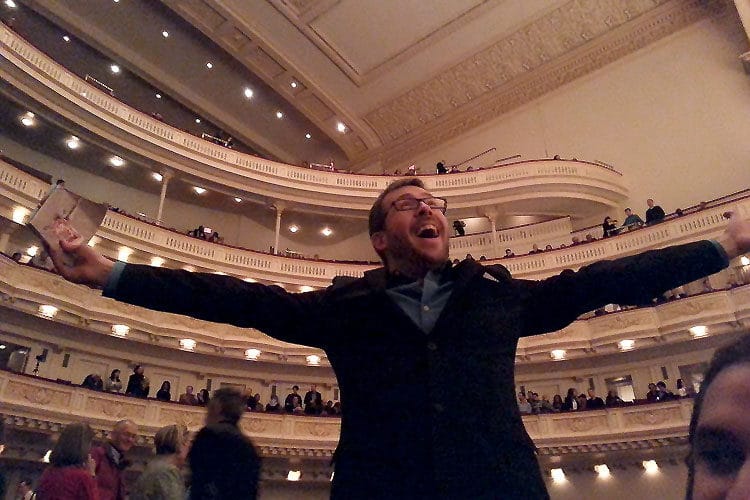
Craft Music to Enhance the Scene
The role of music is to help the story establish tone, atmosphere, time, place, texture, and the qualities of a character. At the most fundamental level, whether it’s music for a film or a show, music serves three purposes—psychological, physical, and technical. Psychological refers to a scene being played from the perspective of being inside somebody’s head. Using music as a physical component means it’s used to react to what’s happening on the screen or stage. With technical, you’re playing with both the psychological and physical aspects, but it’s more about timing—lights coming on, lights going off, fire coming up, fire going down—and the music is following the trajectory of these timings. Often, the music is a mixture of all three of these purposes.
Five Considerations When Thinking About Music for Your Haunt
Music can be used to enhance four different aspects of your haunt: tone, atmosphere, and character themes as well as pacing and flow. A final consideration is when to have music and when to have silence.
Tone
Tone refers to the general feel of the scene and the sense of what the score should sound like. It begins by looking at the story and the layout of a scene and taking a step back, like a filmmaker, to see yourself moving through that scene. You feel the timing of where things happen, feel the presence of what’s coming up, and put yourself in the perspective of the person going through your experience. How should it feel? What do you want to plant in someone’s head to create a certain emotional reaction?
Tone begins with the overall feel of the show. What’s the style or genre of the event or performance, and is there a particular musical style that fits it? Is there a feel that can be enhanced with instrumentation or sound textures that fit the environment you’re creating? What’s the scope and the size of the scene? Do we need to expand the physical presence of the music to fit something big, or do we need to bring it in for a more direct emotional connection?
With tone, you have to visualize things cinematically. You can’t always just play what you see. It’s necessary to look for the deeper qualities. What’s the music playing toward, whose perspective are you following through the scene, and what’s the story asking for? Let those questions lead you through as you make decisions about tone.
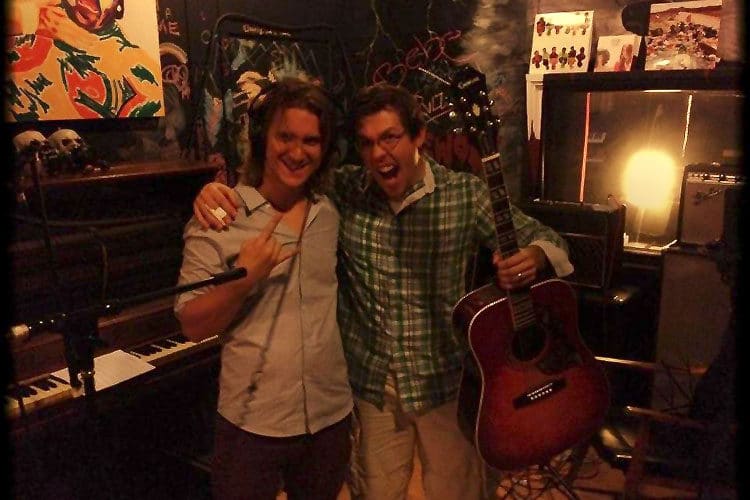
Atmosphere
If you’ve ever walked through a Santa’s Workshop scene and heard hammers, bells, elves working away at equipment, and loud, obvious, Christmasy music blaring, that excessive use of sound can numb you to the experience rather than enhance it. The same is true with haunted attractions that have slamming loud music and sound through the entire thing, so there’s no dramatic arc. This type of sound provokes only a small range of emotional reactions, which means people will take very little away from that experience.
Sound can be used for amazing trickery—such as changing perspective. By using panning techniques or setting speakers at a distance, it’s possible to create the effect of moving through space. Even if you have only two speakers, you can create the impression in the guest that they’re moving in space or things around them are spiraling or shifting. You can pump an intimate, small-room tone into a space that’s a little too large to create the sound of enclosure, in which people are walking around above the guests in muffled tones. You can simulate the sound of being buried alive or locked into a cell underneath a basement just by manipulating EQ.
Loud, obvious, and blunt will only take you so far. It’s necessary to have some variation, so think about the subtleties that exist in your storyline and in the environment you’ve created. If you were walking through and experiencing that scene in real life, how would you want it to feel? Try to think about your environments in that way.
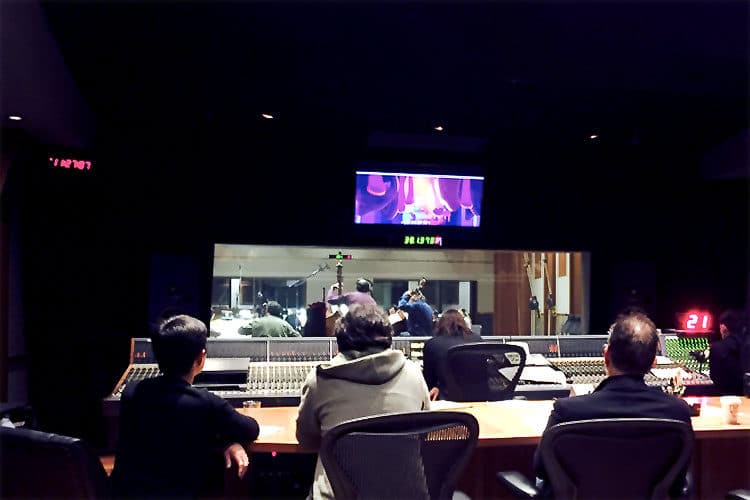
Character Themes
Another great application for music in your creative process is to use it to create themes in your character development. My philosophy is, themes equal connection. This means that a theme can help deepen the audience’s connection to a character or other elements in the story space. When you have a tune attached to a character or environment, it provides a refrain for audiences to hold onto or that locks into that character. A tune is flexible and can be played quickly and heroically or be stretched to become romantic or sad. It can reflect a deeper quality of a character that you’ve been developing and touches on different emotional places.
Think about the ending sequence of E.T., when the kids are outrunning their parents and the cops. If that that theme didn’t kick in when they take off into the sky on their bikes, the scene would have only had only a fraction of its emotional impact. Danny Elfman’s score for Black Beauty is a masterclass in theme development. It has this amazing emotional range and, every time you hear it, you become more deeply connected to the character.
When it comes to character themes, I find it’s usually best to have only one or two, unless you’re doing a heavily theatrical show where a lot more thematic development is needed. One primary theme is good, usually for the protagonist, and you can have a secondary theme for the antagonist or villain. For the villain, you want to create a theme that elicits fear, like those two notes in Jaws that come in from time to time. Developing a good character theme usually means asking the questions I mentioned when we were talking about tone: What drives the character, and what are they trying to accomplish? What kind of sounds, feels, styles, and textures apply to a particular landscape?
Pacing and Flow
A good story has a shape to it. There’s a beginning, a middle, and an end, but it also has multiple levels of dramatic escalation—it escalates, the action comes down, and then it escalates again. This architecture carries the audience through the story. If you just slam your audience with action the whole time, people’s attention will begin to wane halfway through and the effectiveness of what you’re doing will decline. You need ups and downs in your story, and that’s what’s called pacing.
Be aware of the shape of each scene and of the story overall, and use music cinematically to create tension, playfulness, anticipation, or whatever. Music can alter the audience’s perception of time. It can make a scene feel static and quiet, or it can create a sense of acceleration. Music has this weird way of distorting our sense of psychological time.
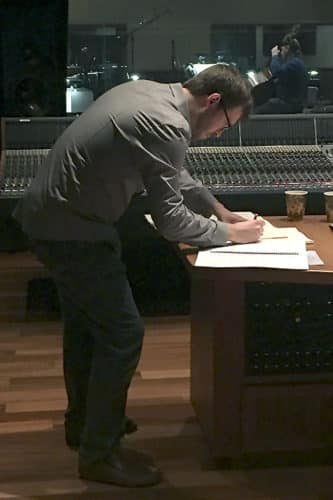
When to Have Music and When Not
It’s not necessary—or advisable—to have music throughout an entire performance or even a single scene. My rule for film music is to wait for a dramatic motivation. There needs to be a cue to invite the music in. If there’s no good reason for music to be there, it shouldn’t be there.
Another of my rules of thumb is to never start a cue unless there’s a place to get out of it. Don’t start unless there’s a story-based or physical event that serves as a natural place to get out of it. So, start the music only when there’s an invitation to do so and always be sure there’s a way out.
Also, stay out of the way until you need to step in. It’s not necessary to have an underscore all the time that does nothing. That’s just wallpaper nonsense. You need music to be active, and you also sometimes need to let the scene play without it. When something physical happens or a character delivers an important line, the audience feels that moment in their gut. That’s when the music should react and grow. So, wait for a motivation to start and stop, stay out of the way until it’s time to lean in, and, when you lean in, do it noticeably. Don’t be shy.
Incorporating Cinematic Timing in the Music for Your Attraction
One thing I’ve taken from the film industry into the immersive and theme-park industry is cinematic timing. We don’t want ambient, wallpaper music that just hangs in the background and may not even serve the scene properly. When it comes to creating music for a film or attraction, it’s important for me to know where all the dramatic points are, where the escalations happen, and exactly how much time I have between each point. I need to know the pacing throughout and the exact timing between the important story beats.
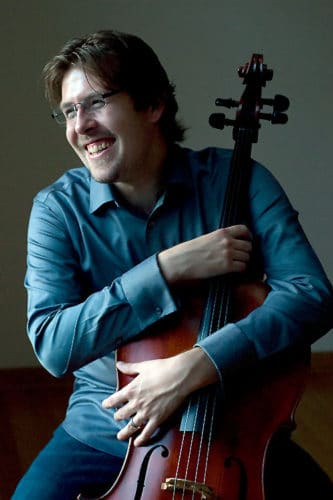
Layering of Tracks
As you’re visualizing your way through your event or attraction story-wise and timing wise, think about how sound will help support that journey through each of those scenes. One way to do this is by layering music. I often deliver music for each scene in several files. If it’s more of an immersive experience and more customization of the timings is necessary, it works well to deliver the music in strategic layers. This is what I mean by delivering multiple tracks for one scene.
In closing, when thinking about how music can enhance your haunt, identify the dramatic points, know how much time there is between each one, and figure out how music can best serve and accentuate those moments—or even if you need music in those moments.
How much do composers charge to create music?
Like all custom work, there isn’t an industry standard cost. Costs are dependent on what percentage of total minutes of music is live recorded. The less live recorded you need, the cheaper the music. For example, involving a full orchestra and choir can cost tens of thousands. On the other hand, recording a small piece myself reduces the cost significantly.
What about off the shelf options?
Browse my sound libraries and contact me for licensing specific tracks. Other industry resources exist for off the shelf attractions music, such as Sinful Audio, who provides audio and sound for immersive experiences.
Chris Thomas
Chris Thomas turned his passion for theme parks and haunted attractions into a thriving musical business. He’s composed music for Evermore Adventure Park, Knott’s Berry Farm, Dreamland (Margate, UK), Queen Mary Chill, Los Angeles Haunted Hayride, and The VOID (immersive VR experiences). He founded Music for Haunts in 2012, a company dedicated to creating bespoke soundtracks for haunted attractions. As a film composer, Chris’s scores have been nominated for a Film and Music Award, Best Soundtrack at SXSW Film Festival, and he’s won the Gold Medal Prize at the Park City Film Music Festival and Best Film & TV Music award at eWorld Music Award. He’s written music for several Emmy-nominated films and for Woman Rebel, which was shortlisted for an Academy Award. In television, he worked with shows such as Lost, House, Vice, and CSI:NY.
HAuNT Connect
HAuNT Connect is a FREE online community to connect the haunted attractions industry at large. Featuring live education and webinars by industry experts, vendor showrooms with products, virtual meeting opportunities to discuss and source products for your attraction, peer-to-peer networking, idea sharing, and more. Register here.


